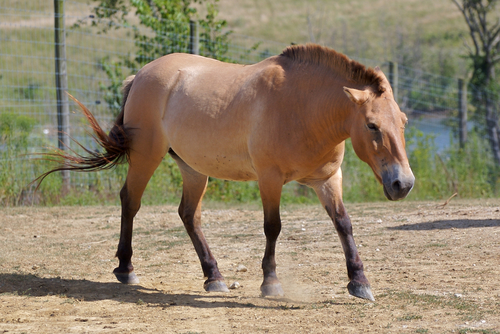
Wild Horse
Equus ferus, the wild horse, embodies freedom with its flowing mane and powerful stride across open plains. Herds, led by a dominant stallion, showcase intricate social bonds. These majestic creatures play a vital role in their ecosystems, shaping vegetation and maintaining grassland health.
30 years
Lifespan
408.23 - 544.31 kg
Weight
Height: 1.4986 - 1.7272 m
Size
Brown, Grey, Black, White, Blonde
Color
13 months
Age of Sexual Maturity
5-7 months
Age of Weaning
30 mph
Top Speed
Endangered
Conservation Status
Increasing
Population Trend
Characteristics
Equus ferus, commonly known as the wild horse, is characterized by its strong, muscular build, flowing mane, and distinctive hoofed feet. They inhabit open plains, grasslands, and steppes, where they graze on grasses and shrubs. Known for their social structure, these horses form herds led by a dominant stallion.
Distribution Range of the Wild Horse
Equus ferus, commonly known as the wild horse, is native to the steppes of Eurasia. Historically, its range extended across the open plains of Europe and Asia, but today, its presence in the wild is limited to specific regions due to domestication and habitat loss.
Wild Horse's Habitat
Environmental Conditions
Wild horses typically inhabit open grasslands, steppes, and semi-desert regions. These environments are characterized by vast, flat terrains with sparse tree cover, allowing for easy movement and grazing. The climate in these regions can vary from temperate to harsh, with cold winters and hot summers.
Ecological Niche
As grazers, wild horses play a vital role in their ecosystems by maintaining grassland health through grazing, which helps prevent overgrowth and promotes plant diversity. They are adapted to survive on a diet primarily consisting of grasses, and their presence can influence the structure of plant communities and the availability of resources for other herbivores.
Copyright @ Nature Style Limited. All Rights Reserved.
 English
English